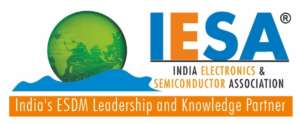Unlock Your Potential with rEmpower VLSI Training
DIGITAL BASICS (REVISION OF ENGINEERING COURSE WORK)
- Binary System, Logic Levels, Different Logic States, Noise Margins
- Combinational circuit & Sequential circuit, Frequency Divider/Multiplier circuit, Sequence Detector
- FSM (Mealy and Moore Models)
ADVANCE DIGITAL (IMPLEMENTATION OF DIGITAL CIRCUIT IN VLSI DESIGN)
- Designing of Different Logic gates/Combinational Circuit/Sequential elements using MUX
- PAL, PLA concepts, Tristate Buffers / Tristate Inverter, Clock Gating Concepts
- Standard Cell Library Concepts
- Logic Optimization
SEMICONDUCTOR OVERVIEW
- Property & Parameter : (Doping/Impurities, ,Amount of Impurities, Different type of Region (N+/N++, P+/P++),Energy Bands, Fermi Level, Drift Current, Mobility)
- Semiconductor Devices : (Depletion region, Built In potential, Immobile Ions, Diffusion Current, Recombination)
CMOS FUNDAMENTALS
- Basic : (Concepts of Vt in a MOS & Subthreshold Regions, MOS Electrical Parameters: Input output characteristics, How Source/Drain Terminals are defined, ,Cross Section of NMOS,PMOS,CMOS,Finfet Vs Planner CMOS)
- Advanced CMOS : (“Different factors on which Vt has dependency, Body Biasing, Channel Length Modulation”, FInFet Concepts, W/L Ration Concepts (Parallel and Series Connection), Parameter Variation (Fast and Slow Transistor) FF/SS CMOS, HVT / LVT / RVT Cells, Device Scaling)
CMOS CIRCUIT DESIGN
- CMOS Pass Transistor : (Switching Theory, NMOS and PMOS pass Transistor, Transmission Gate concepts, Pass transistor based problems)
- CMOS Circuit Design : (Designing of all Logic Gates, Combinational & Sequential Circuit)
CMOS FABRICATION
- Cross Section of CMOS,Single Tub/ Twin Tub, Single Well
- Device Cap and Metal Cap / CMOS Fabrication Process (Step by Step)
- Shallow Trench Isolation (STI layer), Latch Up Concepts
ADVANCE CMOS DESIGN
- CMOS Design : (Temperature Variation, Supply Voltage Variation, Process Variation, PVT Corners, Tap Cells, 3 Terminal & 4 Terminal Devices)
- Power Dissipations (Static , Dynamic Power, Transition Current, Short Circuit Power Dissipations, CMOS Leakages: Leakage related short circuit current, static current)
SCHEMATIC & SIMULATION CONCEPTS (INCLUDE PRACTICAL LABS)
- Schematic of Different Logic Gates : (BSIM Models, SPICE Netlist, Model Files)
- Fan-In, Fan-out, Driving Strength
- Introduction to Virtuoso/Tanner & different settings
- Technology File and different Inputs files
LAYOUT DESIGN (THEORITICAL CONCEPTS)
- Different layers Understanding, Metal Stack Concepts, Different DRC Rules & their understanding
- Layout drawing using Paper and Pen
- Fingering concepts
- TapCells , Nwell Cells Layout Concepts, Well Proximity Effect (WPE)
- Latchup and it’s preventions, Introduction of Guard Ring
- Placement of Standard cell in Design(Concepts of SiteRows/Grids/Tracks/Flipping of Standard Cells)
- Antenna Effects (Concepts, Damage, Remedies),Jumpers, Antenna Diode, Electromigration concepts and it’s preventions, AC/DC EM, IR Analysis, Power planning methods to reduce IR, Shielding Concepts
LAYOUT DESIGN (PRACTICAL TOOL BASED)
- Introduction to Virtuoso Layout window & different settings, Layout Pallets, GUI Interface
- Concepts of DRC, LVS, ERC and Basic Checks (Soft Check)
- Metal Stack based Design (Like Use both M1, M2 for design)
UNIX
- Overview of Unix platform & Different commands
- Shell Scripting: bash cshell,awk,sed
- VI editor concepts
TCL & PERL SCRIPTING
- TCL & Perl Introduction and it’s industrial use, Concepts of Wrapper,
- Procedure in TCL & regular expression
- File Handling, Read/Write Operation, Flow Control (Foreach, while, switches, for etc)
- Perl: List, Hash concepts
QOR AND REPORTING CONCEPTS
- Reporting concepts & different analysis concepts
- Log file and different type of Messages in that ( ERROR Messages, INFO Messages, WARNING Messages)
- Regression Concepts,Version to Version Check , Accuracy Check, Golden Vs Test Result
- Automation For Validation
- How to create charts, read charts, Histrogram, Pi charts concepts
LOGIC SYNTHESIS (BASIC)
- Introduction to Synthesis, Basic Terminology
- Netlist Overview with libraries introduction (Target Library, Link Library)
- Concept of Synthesizable RTL, Mapping to Gate level Netlist
- Different way of Modelling combinational or sequential elements
LOGIC SYNTHESIS (ADVANCE)
- Timing constraints basic (Max Trans, Max Cap, Max Fanout, Min cap)
- Commonly Faced Issues during Synthesis
- CDC and LINT Concepts
- DFT insertion basics inside synthesis tool
INTRODUCTION TO STATIC TIMING ANALYSIS & TIMING ARC
- Importance of Timing Analysis, VLSI Flow Introduction & different stages where Timing analysis happen
- Different component of Timing analysis (Timing Budgeting, Timing Constraint, Timing Check,Timing Violations, Fixing of Timing Violations
- Introduction about different input and output files for STA
- Importance of Timing Arc & Timing Arc Representation in .LIB Files
DELAY INTRODUCTION (CELL DELAY AND NET DELAY)
- Introduction of Delay Concepts
- Combinational Path Delays, Sequential Path Delays
- Net Delay basic (Metal Wire Concepts, Metal Stack concepts)
- Gate Delay Concepts (Charging & Discharging concepts, Load related Concepts, Delay dependency on current of Inverter, Internal Capacitance, Input Capacitance and Output Capacitance concepts
DELAY MODELS & UNDERSTANDING DELAYS LIBRARIES
- Gate Delay Models (How delay depends on Input Transition & Output Load, NLDM Library & CCS Library)
- Net Delay Models (Transmission Line Models, Elmore Model,Wire Load Model
STA TOOL DELAY CALCULATION METHODOLOGY
- Delay Calculation by STA tools (Path based Analysis and Graph Based Analysis)
- Pre-Layout Delay (using wire-load model) & Post layout Delay (using SPEF File) calculation
- Delay Calculation using Delay tables, Complexity across different corners.
- Dependency of Delay on different parameters (PVT Corners, Manufacturing defects, RC Corners)
TIMING PATHS, TIMING EXCEPTIONS & TIMING CONSTRAINTS
- Various Timing Paths (Data Path, Clock Path, Asynchronous Path, Clock Group Introduction
- Representation of Timing path within Timing report
- Timing Exceptions (False path, Multicycle path)
- Clock Constraints, Input and Output Delay constraints
SETUP AND HOLD TIME
- Different Timing Terminology (launch/capture path, Slew, Clock latency, Clock skew)
- Setup and Hold Time
- Setup and Hold Check and corresponding Equations
- Basic Timing Report
ADVANCED TIMING CONCEPTS
- Global Setup-hold time
- Onchip Variations (OCV),Advanced onchip Variation (AOCV),Setup and Hold Check in case of OCV, AOCV
- CRP & CRPR
- Multi-Mode Multi-Corner timing analysis
TIMING OPTIMIZATION & TIMING CLOSURE METHODS
- Pre-placement (After synthesis) optimization
- Pre-CTS (during or after placement or floorplaning) optimization
- Fixing of Setup and Hold Violation at Logic Synthesis (front-end vlsi)
POST LAYOUT STA (BACKEND) & FIXING SETUP AND HOLD VIOLATIONS METHODS
- Post CTS or Pre-Route (After CTS)Optimization
- Signoff Timing or Post-Route (After Routing) Timing Closure
SRAM
- SRAM Basic Concepts & SRAM Vs DRAM
- SRAM array architecture
- SRAM – Basic Read and write operation
FUNDAMENTAL OF DFT
- DFT ? Why, What, Who, When?
- Implementation of Digital Concepts in DFT & Different Terminology
- Test Concepts & Automatic Testing
- Timing Checks and Constraints, Timing concepts for DFT
DFT BASICS
- Introduction to BIST (Built-In Self Test)
- Introduction to BIT (Built-In Test)
- Scan Chain Concepts, Boundry scan chain
- Introduction of ATPG (Automatic Test Pattern Generation)
BASIC CONCEPTS
- Power Domain Concepts, Different Device powers (Leakage power, Static Power, Transition power)
- “Power Related Cells (Retention cell, Level shifter, Isolation Cell and other special cells)
- Low power concepts – Why we need it, UPF / CPF concepts – Why we need it
FLOW AND DESIGN BASICS
- Modular Approach / Hierarchical Approach, Top to bottom, Bottom to Top Approach
- Overview of RTL to Gatelevel Netlist, Overview of Physical Design
- Modes (Functional, Test and others),MCMM, Case Analysis,
- Constraints (Physical Constraint, Design Constrainst, Power Constraints, Timing Constraints)
- Netlist,Pins/Ports/IO Pads /PG Pins, ,Design Corners (PVT and RC Corners)
- Timing Analysis Vs Timing Optimization,,Power Analysis Vs Power Optimization
UNDERSTANDING OF DIFFERENT INPUT/OUTPUT FILES
- LEF/DEF, Model Files
- Timing Library (.lib), SDC, Wireload,
- LVS Deck, DRC Deck, ERC Deck, Interconnect file, TLU+File/Cap tables, Parasitic Files (SPEF)
PHYSICAL DESIGN FLOW
- Floorplan
- Placement
- CTS
- Routing
- STA and Parasitic Extraction
VERILOG CONCEPTS
- Verilog Design Flow and Design Methodology
- Definition of Verilog Codes (Different Syntax)
- Different Type of Modelling (Gate level Modelling, Data Flow Modelling, Behavioural Modelling)
- Test Bench Writing concepts
- System Task Function






